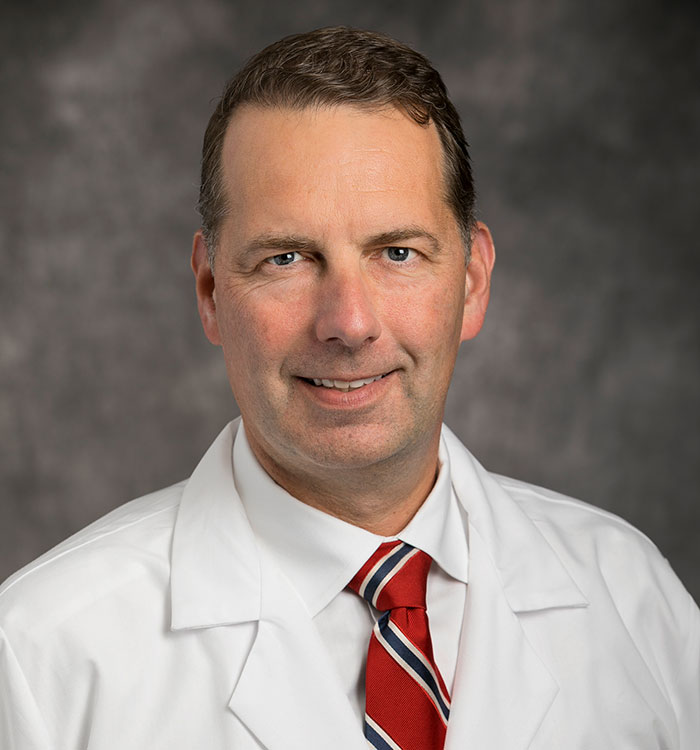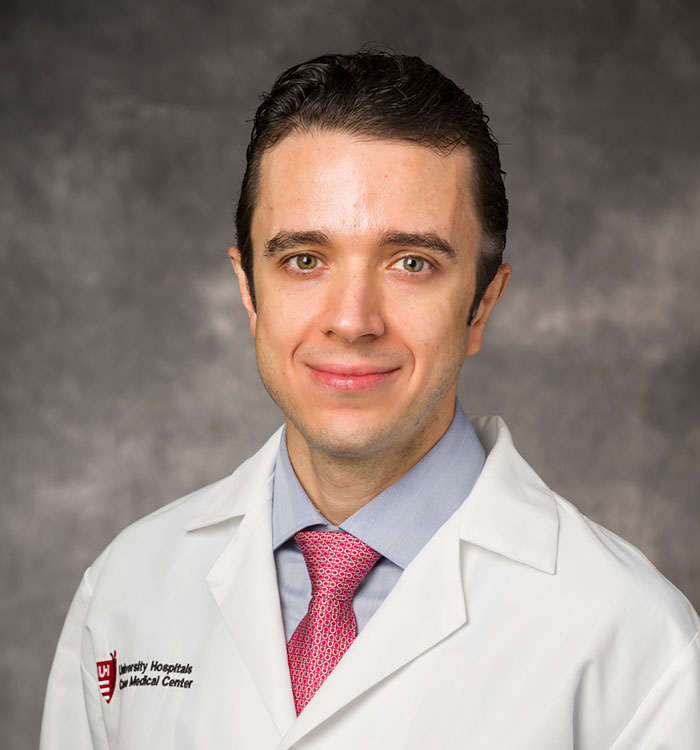A Full Spectrum of Options for Mitral Valve Disease
March 09, 2020
Experts at University Hospitals offer advanced, minimally invasive treatments
Innovations in Cardiovascular Medicine & Surgery | Winter 2020
An estimated 5.8 million Americans have mitral valve disease.1 Despite the disease’s extensive prevalence, optimal treatment for each patient requires an individualized approach. At University Hospitals Cleveland Medical Center, expert physicians offer a full spectrum of advanced interventions and leading technologies for mitral valve repair or replacement.
 Marc Pelletier, MD, MSc, FRCSC
Marc Pelletier, MD, MSc, FRCSC“The evolution of mitral valve intervention has become significantly less invasive over time,” says Marc Pelletier, MD, MSc, FRCSC, Chief of the Division of Cardiac Surgery at UH Cleveland Medical Center and Director of the Heart Surgery Center at University Hospitals Harrington Heart & Vascular Institute. “Five to 10 years ago, the only option for most mitral valve surgeries was a sternotomy. Since then, there has been progressive development of both minimally invasive open surgeries and percutaneous approaches.”
Internationally recognized, the multidisciplinary team at University Hospitals utilizes sophisticated diagnostic and imaging capabilities to determine optimal treatment plans for both primary and secondary mitral regurgitation (MR) and mitral stenosis, including traditional open-heart surgery as well as less invasive surgical and transcatheter alternatives.
OPEN SURGERY PROVIDES LONG-TERM DURABILITY
 Guilherme Attizzani, MD
Guilherme Attizzani, MD“Open-heart surgery remains the gold standard for mitral valve intervention in patients who can tolerate it,” says Guilherme Attizzani, MD, interventional cardiologist, Director of the Valve & Structural Heart Disease Center at UH Harrington Heart & Vascular Institute, and Associate Professor of Medicine at Case Western Reserve University School of Medicine. However, open procedures no longer always demand access through the sternum.
Utilizing a minimally invasive open cardiac technique, UH surgeons are able to repair or replace a defective mitral valve through a small 3-inch incision on the right side between the fourth and fifth ribs. The pioneering technique offers certain patients a durable procedure with optimal clinical outcomes. “Over time, we’ve learned to repair or replace a mitral valve without having to divide the sternum. We can now treat mitral valve disease with surgery that is much less invasive,” says Dr. Pelletier. “This has resulted in our patients leaving the hospital sooner, returning to work more quickly and resuming normal activities much sooner than before.”
When compared with traditional sternotomy, advantages of the minimally invasive procedure include reduced postoperative pain, favorable cosmesis and improved overall patient satisfaction.
TRANSCATHETER APPROACHES OFFER LIFE-SAVING ALTERNATIVES
As the population grows older and increasingly medically frail, complex surgery often becomes too great a risk. Fortunately, UH offers a comprehensive range of transcatheter mitral valve replacement or repair (TMVR/r) options. “Over the past year, we have definitely seen increased demand for TMVR/r procedures,” says Dr. Attizzani. “We offer a great variety of options to treat mitral valve disease. The key to achieving superior outcomes is our ability to determine which procedure is best matched to the severity of mitral insufficiency and patient history.”
Some of the TMVR/r techniques offered at UH include:
- MitraClip®: A rapidly growing procedure at UH Harrington Heart & Vascular Institute, nonsurgical MitraClip is the first minimally invasive catheter-based system approved by the Food and Drug Administration for mitral valve repair. While the patient is under general anesthesia, a clip is placed within the mitral valve to reduce or correct regurgitation. Indicated for patients who are poor surgical candidates, MitraClip reduces symptoms such as shortness of breath and fatigue, improves quality of life, and can extend life span in patients with congestive heart failure.
- Intrepid®: UH is the only healthcare system in Northeast Ohio offering patients the opportunity to participate in the Apollo trial of Intrepid, an investigational transcatheter mitral valve replacement procedure that delivers a replacement mitral valve through a catheter inserted between two ribs directly into the malfunctioning valve within the heart. Once enrolled in the clinical trial, patients are randomized to either Intrepid or conventional mitral valve replacement surgery. Additionally, study patients deemed too high risk for surgery may be approved for Intrepid.
- AccuCinch®: In cases of secondary mitral insufficiency caused by an enlarged left ventricle, UH physicians are utilizing AccuCinch, a first-in-class percutaneous ventricular repair system under investigation in the United States and Europe. By reducing the size of the left ventricle and providing support to the heart wall, the device is showing promise for reducing MR as well.
- Mitral valve-in-MAC: For patients with severe mitral regurgitation and/or stenosis associated with severe mitral valve calcification, UH physicians are able to utilize transcatheter valve replacement in the mitral position. This option can reduce risks associated with heart failure and improve quality of life in patients too weak for open-heart valve replacement
- Mitral valve-in-ring: For high surgical risk patients with severe mitral regurgitation and/or stenosis who have had prior surgical mitral valve repair, UH physicians can implant a transcatheter valve in the mitral position, which would avoid additional open-heart surgery
- Mitral valve-in-valve: Transcatheter valves can also be implanted inside failed surgical mitral valves for high surgical risk patients.
“When you look at mitral valve repair around the country, approximately 10 percent or less is treated in a minimally invasive manner,” says Dr. Pelletier. “The fact that we have the ability and expertise in all facets of mitral valve surgery is tremendous. We can offer patients a standard operation, a minimally invasive operation or a transcatheter approach, depending on what is best for them. This ability to tailor a procedure for each patient positions UH as one of the leading health systems nationally.”
For more information, contact Dr. Pelletier at Marc.Pelletier@UHhospitals.org or Dr. Attizzani at Guilherme.Attizzani@UHhospitals.org, or call 216-553-1439.
References
1. The silver book. Alliance for Aging Research. 2018. Accessed at: https://www.agingresearch.org/app/uploads/2018/06/Silver-Book-Valve-Disease-VOLUME-Final.pdf


